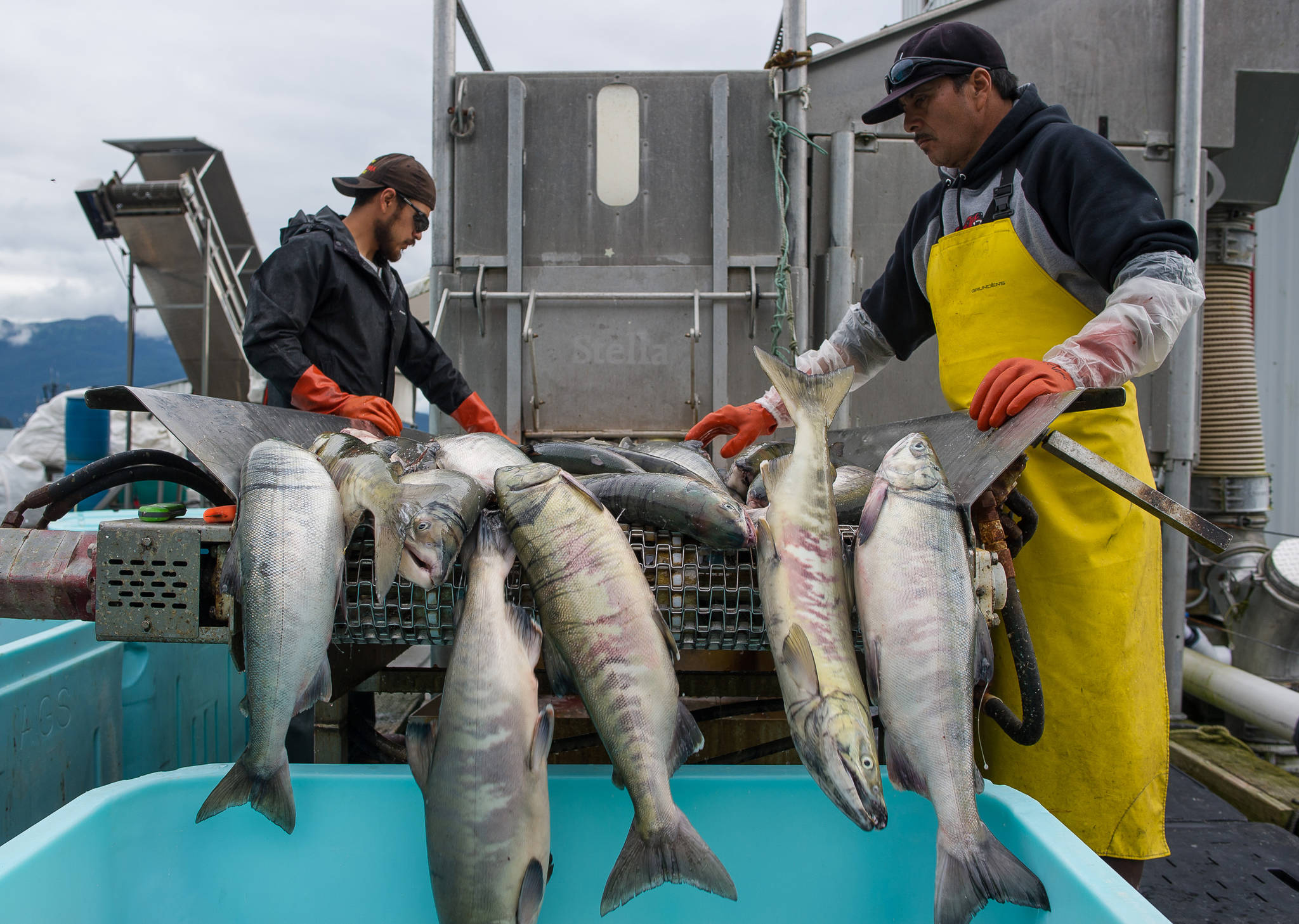As commercial salmon fishing season wraps up for the summer, numbers recently released by the Alaska Department of Fish & Game show a tale of two species.
Statewide chum salmon harvests broke a record this year while harvest levels for king salmon dipped to the lowest ever recorded, according to preliminary numbers.
It all added up to what ADFG is calling a “banner year” for commercial salmon fishermen in the state.
As of Oct. 2, fishermen harvested 224.6 million wild salmon of all species, weighing in at 1,041,000,000 pounds.
At the dock, these fish were worth $678.8 million. This is the “ex-vessel” value — the amount salmon processors have paid or promised to fishermen in the form of fish tickets. That number represents an increase of more than $250 million over last year’s $407.3 million paid to fishermen.
The ex-vessel value typically only goes up as processors issue “retro” checks to fishermen if they’re able to sell their fish for a higher price than expected.
This year’s haul is the third highest caught during one salmon season since 1975 in both pounds and number of fish. Only 2013 (280 million salmon) and 2015 (265 million salmon) stand ahead of 2017’s harvest.
More than 25 million chum, also known as dog or keta salmon, were caught this season, accounting for almost a fifth of the money paid to fishermen in the state at $128.3 million.
Those chum sold for a statewide average price of 66 cents per pound, an increase over last year. That number was highest in Southeast, at 80 cents a pound. It was lowest in the Alaska Penninsula, where fishermen only received 27 cents per pound for chum.
Chum harvest levels were “obviously the highlight of the season, and unexpected,” ADFG Deputy Director Forrest Bowers said by phone Friday. “I think that was one of the most positive aspects of the season.”
Bowers crunches salmon numbers for ADFG. In addition to high chum returns, two other things stuck out to Bowers about this commercial salmon season: a third straight harvest of more than 50 million sockeye salmon and a record low return for chinooks.
Commercial fishermen caught only 251,141 chinook this year. That’s the “worst in modern history,” according to seafood economist Stephen Wink. Since 1975, the furthest back ADFG has recorded numbers, king salmon harvest levels have never dipped this low.
Commercial trollers in Southeast Alaska were particularly hurt by the dropoff, Bowers said. Other river systems in the state, like the Nushigak and Yukon, actually saw an upswing in king salmon harvest levels this year.
Bouyed by a strong season in Bristol Bay, sockeye fishermen harvested over 50 million pounds of reds for the third year in a row for a total of 52.4 million fish.
Sockeye are “consistently our most valuable species on a statewide basis,” Bowers said. They accounted for 48 percent of the money paid to fishermen this year.
Rounding out preliminary harvest levels were 141.6 million pink salmon and 5.1 million coho.

